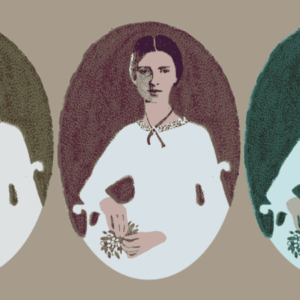
How the Book Industry Turns Its Own Racism into a Marketable Product
Tajja Isen on Lip Service in Publishing
The failure of progressive change in contemporary book publishing is so total that there is now a whole string of books about the failure of progressive change in contemporary book publishing, often backed enthusiastically by big corporate publishers, in an elaborate circuit of denial and absolution.
In June 2021, Atria Books released The Other Black Girl, by debut novelist Zakiya Dalila Harris. Harris, a former assistant editor at Knopf, had crafted a novel that dissects the book world’s whiteness with an insider’s long pent-up precision: Nella, the only Black employee at a storied New York publishing house (similar to Harris’s own situation), struggles with the toxic atmosphere of an all-white workplace. On top of that, she has to endure the field’s other entry-level burdens, like relentless grunt work and low pay. When Wagner Books finally hires another Black girl, Nella thinks she might have an ally until she starts getting gaslit by the new hire, who seems eerily indulgent of their white bosses’ worst impulses. A year and a half before the novel’s release, Publishers Weekly reported a fourteen-way bidding war between houses that culminated in a seven-figure deal.
The note at the front of the advance copy gives a taste of the enthusiasm that thrummed around the book. The winning bidder “chased it alongside every single editor in town,” the note says; “We all wanted this razor-sharp send-up of the starkly white world of book publishing.” Acquiring Harris’s book was the type of victory that powers a near-obsolete fantasy of the industry: a writer spends years laboring over a manuscript until she is plucked from obscurity by a star-making editor. The editor marshals corporate resources behind a story that’s riveting enough to keep readers turning pages (and hopefully send copies flying off the shelves), but that also tells us something essential about the way we live.
This is the Jonathan Franzen story, the Jonathan Lethem story, the story of at least one other Jonathan. It is a story that used to involve a lot of handshakes and martinis. It is not a story that usually winds up broadcasting the histories North America prefers not to talk about—but this one did. The old narrative of publishing casts the business as rosy, merit-based, and perfectible. Rather than being driven by the market, it’s driven by individual skill, choice, and editors’ perceptive responses to artistic genius. It’s the one-in-a-million story arc of true love, but also the plotline of bootstrapping capitalist entrepreneurship.
The journey of Harris’s novel follows a trajectory that’s become increasingly unlikely in the literary world. Because of the book’s sharp critique of structural whiteness, its publication also lends heft to a different, feel-good fiction: those from the margins will eventually tilt toward the center by dint of ability, both their own and that of the people in charge. Good white people inherently know the value of diversity and are able to correct literature’s historic exclusions one book at a time. Justice à la carte is possible, provided you know how to amplify the right voices.
Harris’s novel deserves the hype. It’s a sparkling bit of fun, dishing the dirt of the trade in a manner both savage and playful. Scenes of editorial and marketing gaffes made familiar from headlines, like throwing money behind a white-authored book seamed by racist stereotype (with the pressure to “catch it” offloaded onto a racialized junior staff member who’s hesitant to piss off the higher-ups), are rendered in the vivid but casual dread of someone who knows, too well, whereof she speaks.
Publishing has incorporated the story of its flaws back into itself to be repackaged as product.
Pitched by Harris’s agent at the intersection of Jordan Peele’s horror film Get Out and the catty publishing TV show Younger, the book carries sufficient commercial appeal that a hefty offer feels deserved. But laying all that aside for a moment, doesn’t it scan as odd that the collective book industry reply to “your working conditions are so racist they’re a form of psychological horror” was an ecstatic yes, drag me? How hungry do you have to be for expiation—or how constrained your sense of possibility for improvement—to eagerly claim these problems as endemic?
Much of the early press around Harris’s deal notes its closeness in time to the American Dirt backlash, in which Jeanine Cummins had been paid a reportedly comparable sum to tell a story of Latinx refugees along the Mexico-US border. A few weeks before its release, American Dirt attracted a flurry of criticism for its stereotypical depictions of Mexico and of Latinx people. It became the latest flashpoint for issues of representation in publishing—more specifically, it was further evidence that the industry had only partially digested the lesson that representation matters, buying up stories about people of color while still overpaying white people to tell them, and arguably not even that accurately.
While Latinx writers had been ignored by mainstream houses, Dirt was positioned as the definitive novel on immigration in America, a subject that industry lore held to be all but unsellable. The manuscript sailed through executive meetings insulated by a powerful editor, and only when the book hit the outside world, which contained a more realistic cross-section of the reading public than senior-level staff meetings had, did the consequences finally come raining down.
The time, in other words, seemed ripe for a serious reckoning with institutional literary whiteness. There’s a subplot in The Other Black Girl about a manuscript that basically commits the same sins that Dirt was later accused of, told from the perspective of a low-level employee who sees what the all-white senior staff can’t. In the novel, Nella is assigned to read and offer notes on one of the house’s forthcoming titles, and she agonizes over whether or how to tell her boss that it’s cartoonishly racist.
The fictional manuscript, which is about the opioid crisis, has only one Black character—“Shartricia”—whose persona is made up exclusively of stereotypes. While telling her boss may be the morally right thing for Nella to do, she hesitates because the white male author is also one of Wagner Books’ rainmakers. He’s also, no spoilers, incredibly fragile and does not take criticism well. But nobody else clocks the problem. Unless Harris added this subplot in at a later date, its presence indicates these patterns are so baked into the field that she basically predicted American Dirt before American Dirt happened. More than being a sign of her canniness, it’s a sign of an industry that has learned so little that such a situation is more or less mimesis.
In an interview with Publishers Weekly, Harris’s agent admitted that the Dirt fallout came up in early meetings for The Other Black Girl and “may have made editors even more confident that [Harris’s book] has an audience.” The Dirt snafu, after all, had been dissected exhaustively by the news cycle. The public seemed keen to know how such a mishap, which looked so obvious in retrospect, could have happened in the first place; deep-dives explored parts of the production process up to a year after the novel came out.
This fascination, the PW piece implies, may have created an audience hungrier for a book about race, which is a relatively uncommon notion in big publishing. Like the belief that stories about immigration are too unsexy to sell, the warmed-over falsehood that nobody (white) wants to read about race or racism (unless it’s a book about slavery) has been used to bar Black writers from the halls of literature for years. The Dirtcontroversy seemed to prove Harris wasn’t the only one ready to reckon with the industry’s skeletons.
That isn’t the only thing the controversy proved. From a business standpoint, the Dirt saga has a much happier ending: a tale of executives who read the manuscript, saw dollar signs, and got exactly what they paid for. The book’s critical cred may have been shredded, but it still topped the New York Times bestseller list and was one of the year’s most commercially fruitful titles. And yet the path from one seven-figure acquisition to another—Cummins to Harris—still managed to poke the dormant narrative of improvement; the idea that a switch had been flipped and justice was now flowing in the right direction. But neither American Dirt nor The Other Black Girl are examples of how to deal with an inequity problem. They’re examples of how to deal with a money problem.
The Other Black Girl isn’t airing any dirty laundry that wasn’t already extremely public—Harris’s innovation is how precisely she documents the issue. Other novels tell a similar story, as do the stats on who gets hired and paid and retained, and whose stories and ideas get put in print. The consensus over publishing’s whiteness problem snakes back through the last few years of contemporary fiction, demographic surveys, and digital humanities scholarship.
In several recent novels that center millennial life, a character’s low-level publishing job functions as a kind of shorthand for both marginality and precarity. As a pattern, it can feel almost uncannily specific. Edie, the narrator of Raven Leilani’s incandescent Luster, is also one of only two Black people working underpaid staff jobs in a publishing house. Edie’s erstwhile double is, like Nella’s, more careerist than she is, a Tobagonian woman with an eye on Edie’s job and an aptitude for “doing that unthreatening aw-shucks shtick for all the professional whites.”
Publishing isn’t as central to the plot of Luster as is it in The Other Black Girl, but it has a heavy hand in shaping the harrowing material conditions of Edie’s life. Leilani is alert to how life under capitalism is represented in fiction. “I personally need to know how characters eat and pay rent,” she said in an interview with Lux magazine. These financials, she added, “often have enormous bearing on life’s trajectory and plot.” In crafting the trajectory and plot of Luster, she gave Edie the same job she herself had—an entry-level publishing gig. In New York City, Edie’s efforts to survive on that salary involve living in a cockroach-infested apartment and licking tuna from cans. (The paucity of the pay, especially for entry-level jobs, is another thing the industry has spent many years agreeing is a problem while the problem has largely stayed the same.)
The professional setting, and its regressive racial politics, also offers a window into the kinds of stories about Black people that the industry tends to favor. Scanning a pile of books marked for giveaway in the company lobby, Edie reels off a list that plots the coordinates of Blackness in the literary imagination: three slave narratives, one of them about “a tragic mulatto who raises the dead with her magic chitlin pies”; a “domestic drama about a black maid”; and an “ ‘urban’ romance where everybody dies by gang violence.” The only book description with any information about its author is “a book about a Cantonese restaurant, which may or may not have been written by a white woman from Utah, whose descriptions of her characters rely primarily on rice-based foods.”
It’s a dismal list any way you slice it, but what’s notable is the lack of detail about the authors’ backgrounds other than the final example. That only one author gets (potentially) identified leaves open the chance that the other books, built on tired caricatures of Blackness, were either written by white people or were the only stories by Black writers the white-staffed imprint was willing to gamble on. As the books sit there abandoned in the lobby, demoted to the status of “Diversity Giveaway[s],” that gamble doesn’t seem to have paid off.
Ling Ma’s 2017 debut, Severance, is a novel about the mindless repetition of office work that presciently rendered a pandemic a few years before COVID-19. In Severance, Ma appoints publishing as the chief representative of empty capitalist labor. Candace Chen, the daughter of Chinese immigrants, has spent five years working dutifully (if disaffectedly) at Spectra, a New York–based publishing house, coordinating the production of specialty Bibles. Candace is good enough at her job—she sits down at her desk, the hours disappear, and the tasks get done—but her heart’s not in it. A photographer outside work hours, Candace aspires to design coffee-table books alongside the company’s “Art Girls”—a group of “colt-legged, flaxen-haired” women in their twenties, who tote “discounted Miu Miu and Prada” as they swan along the office hallways.
When a spore-based disease blossoms into a global crisis, Candace accepts a lucrative contract to stay in the office after Spectra’s executives have fled New York, coordinating Bible production with the company’s flagging business partners in Hong Kong. In both the city and the world around her, the numbers of infected people skyrocket, with victims trapped in an endless loop of unthinking repetition—a family droning grace over a rotted meal, an elderly neighbor fumbling with the keys outside her apartment.
Candace doesn’t cling to her comparably numbing job amid global catastrophe because she has an unusually passionate desire to be one of those art-world white girls, but because her work routines anchor her to the only stability she has left. Candace’s job, like Edie’s and Nella’s, taps a vein of interrelated contemporary problems. Want to tell a story about the abject horrors of surviving under racial capitalism in a world blanched by homogeneity? Give your character an entry-level publishing job.
Whiteness, precarity, tokenized hiring—these literary tropes form their own consensus about how inhospitable the industry can be, especially for junior-level workers who are neither white nor wealthy. There are entire savage meme accounts dedicated to driving this point home on Instagram. These novels concur with The Other Black Girl and the New York editors who bid on it: yes, the situation is really bad.
With towering barricades around any port of entry, the book industry has always been complicit in marginalization.
Moreover, publishing has incorporated the story of its flaws back into itself to be repackaged as product (this book, I suppose, included). The absorption of dissent isn’t surprising; loosening the valve to release a little built-up tension is a time-honored tactic that lets the status quo carry on unchecked. Publishing is a business like any other, and especially at the big commercial houses, decisions are made in the service of the bottom line. At the same time, what makes the lack of demographic change more disheartening—and the cannibalization of critique seem darker—is the amount of breath the industry has spent on professing how much it wants to do better.
Because the numbers tell a different story. In 2019, independent publisher Lee & Low Books released its second Diversity Baseline Survey. The results, widely circulated in news and social media, showed negligible improvement over the inaugural survey four years prior. Measuring the race, gender, orientation, and ability of workers across department and seniority, the survey put figures to a problem that was already long known.
The results reported an overall 76 percent of white employees—three percentage points lower than the outcome of the 2015 survey, which wasn’t considered statistically significant, especially since the 2019 survey had had a bigger sample size. (For reference, the population of white people in the United States, the most recent census reports, is 60.1 percent.) The percentage of white employees fluctuated slightly depending on the position: the highest concentration, at 85 percent, was clustered in editorial; the lowest, at 51 percent, was among the interns. The percentage of Black workers hovered at a relatively stable 3–5 percent across all of the categories with exceptions in the intern and editorial pools—8 percent and 1 percent, respectively.
Though the decision to acquire a book engages multiple departments and requires buy-in from far more than one person, when it comes to the laps that manuscript submissions land in and who picks the ones that go forward, editors are the frontline.
These numbers were released during the long winter of American Dirt but still a few weeks prior to The Other Black Girl’s deal announcement, perhaps stoking the latter’s fire even hotter. The results also came out before the uprisings against police violence sent corporate hand-wringing into an even higher gear. The pattern established across industries—where CEOs issued statements in support of Black lives, calling forth an immediate surfeit of evidence to the contrary—seemed to take place with particular verve in the publishing space.
Each of the Big Five publishers made the requisite post, though the message took a different form depending on who issued it: white text on a black square; letters containing fleshed-out accountability plans; or an antiracist booklist-cum-shopping list appended to a statement. But, at the same time as they issued these pledges to justice, some presses doubled down on practices that indicated the opposite. With towering barricades around any port of entry, the book industry has always been complicit in marginalization.
More recently, it has increased its stock in injustice by continuing to publish material that threatens or harms the lives of the people the profession already shuts out. Books about the Trump presidency were incredible sellers. As material by or about white supremacists grew more lucrative, the gap between the word (“we stand with you,” “we’re listening”) and the action (“. . . but we’re also giving a million dollars to someone who believes your existence is worthless/deserving of extermination/ up for debate”) pushed the theater of good intentions beyond credulity.
Before and even during the wave of statements and action plans, the book industry got away with a lot: using AI to trawl the text of classic novels for nominally raceless characters, then deciding Frankenstein (or whomever) was actually Black and issuing a series of special editions right in time for February—as Barnes & Noble did for their swiftly revoked “Diverse Editions” initiative. Paying bottom dollar for racialized writers’ books (if they bought their books at all) but throwing money at white ones to tell the same story riddled with inaccuracies. Keeping certain acquisitions secret from a company’s staff and then announcing a marquee title by a fascist-adjacent public intellectual, or alleged child molester, or murderous cop, in a surprise blitz.
This dissonance persists because publishers are trying to have it two different ways: to claim moral progress by anointing a few more marginalized writers than it has in the past, while disavowing the language of progress or justice altogether when they give a platform to hate speech (at that point, it becomes an issue of free expression). But neither of these frameworks tell a complete story—the most relevant metric is what’s considered sellable.
__________________________________

Excerpted from Some of My Best Friends: Essays on Lip Service by Tajja Isen, available via Atria/One Signal Publishers.
Tajja Isen
Tajja Isen is a Toronto-based writer and voice actor. She has written for Longreads, BuzzFeed, Broadly, Bitch, The Globe and Mail, Electric Literature, The Rumpus, and Catapult, where she is also a contributing editor.



















